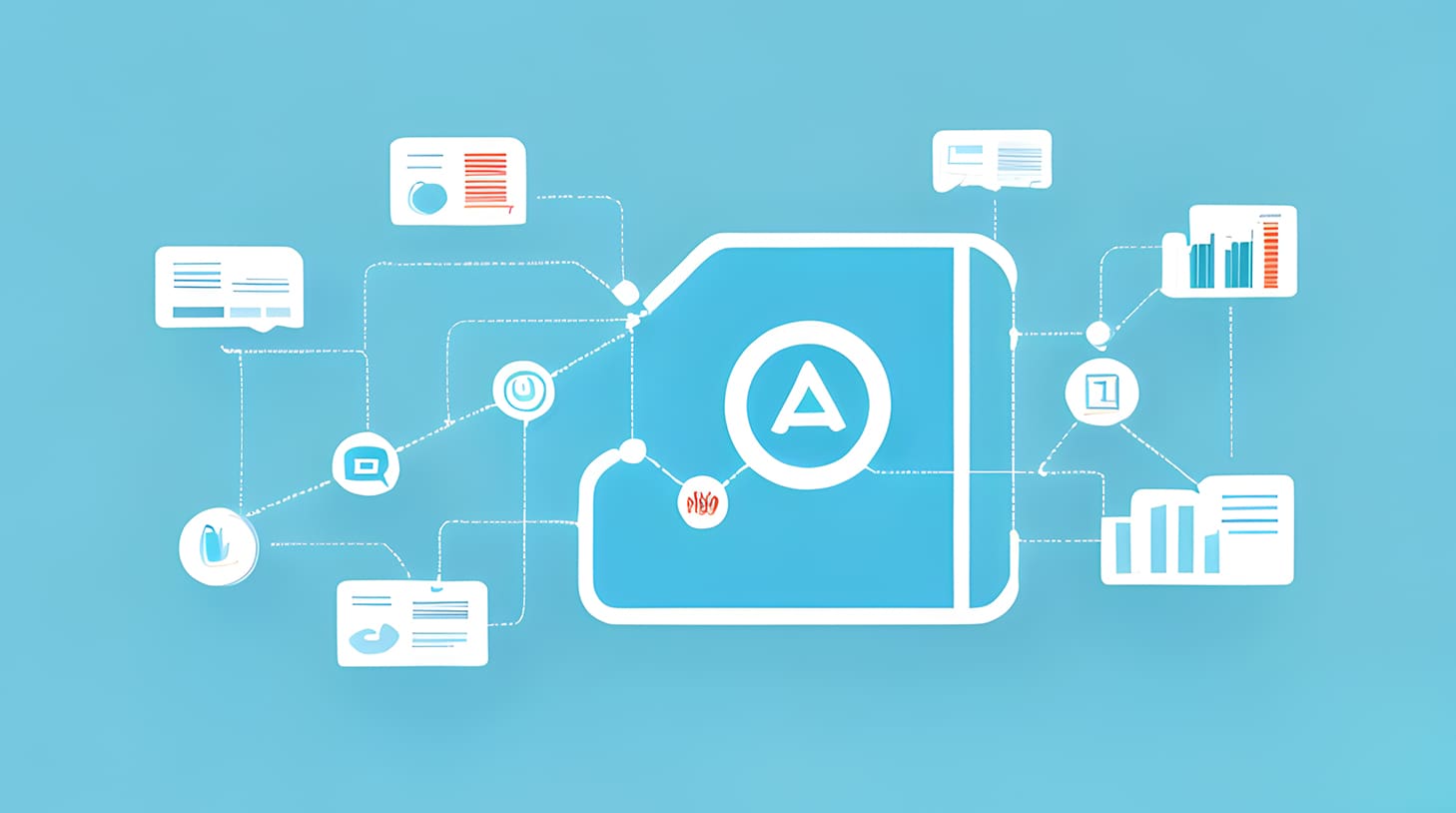Your Hiring Pulse report for January 2022
In the Hiring Pulses up to this point, we’ve highlighted the ever-shortening Candidates per Hire metric combined with a quicker Time to Fill every month in our network data. It’s an interesting dynamic. What’s going on here?

We’ve suggested a couple of perspectives including:
- A more concentrated – and higher quality – candidate pool as a result of applicants being more selective in their jobhunt; and
- Frustrated employers just locking in on the “good enough” candidate rather than the “ideal” candidate.
In December’s Hiring Pulse, we warned SMB employers against the latter strategy – being quick to hire just to fill those looming gaps – because while it’s a great stopgap measure, it can hurt in the long run.
Instead, we recommended that employers put in the prepwork ahead of time before even posting that job ad – ideally as a collaborative hiring team. For example, you and your team can prepare for the recruitment process by:
- Outlining the overall goals of the team
- Identifying the gaps within that team
- Determining what job opening(s) ideally fill those gaps
- Crafting the “ideal candidate profile” (ICP) for the job opening(s)
- Drafting a job description clearly encompassing details from all of the above – including all elements of the employee value proposition
- Establishing a clear selection process – with interviewers and interview questions, assessments, screening strategies, etc.
- Preparing for negotiations as needed – and budgeting for a specific salary range
- Clarifying a timeline – both for the benefit of the team and the candidate
That’s a lot right there, and that’s before the Time to Fill even starts with the posting of a job ad. But as stated in December, this is future proofing – the more prepared you are for a recruitment process beforehand, the better results you will have and the less likely you’ll have breakdowns.
Part of all that is data, of course. Nothing runs without knowing the benchmarks. We know that this as important to you as any of the above when recruiting in the SMB world. If you’re finding that you’re getting X number of applicants for your open roles, is that normal? If you’re taking Y days from the point you posted a job to the point your candidate signs that job offer, is that something others are experiencing as well, or is that something you need to get better at? And so on.
To help you, we’re taking a fresh approach to hiring data to support you when you analyze your own numbers.
How we’re looking at data
‘Normal’ doesn’t really exist anymore, even if it is a ‘new normal’. In fact, Future of Work thought leader Ira Wolfe calls it the “Never Normal” – which looks to be more and more the case with every passing month.
Quick note: ‘Uncertain times’ is a damn cliche – but it’s still the case, and as Ira suggests, it’s the standard now. So, looking at the data YoY or even MoM makes for a flawed study because of the regular fluctuations in the data over short periods of time. So, instead, we’re looking at rolling trends. This means we’re showing data as a percentage increase or decrease when compared with the rolling average of the past three months. Jump to the end for a detailed methodology on this.
As always, we look at the worldwide trends for three common SMB hiring metrics:
- Time to Fill (TTF)
- Total Job Openings
- Candidates per Hire (CPH)
In this Pulse, we keep things short by staying with just these three core metrics. For the fancy stuff like regional trends and function-based trends, you’ll have to wait for a future Pulse.
Let’s start crunching away!
Table of Contents:
- Time to Fill
- Total Job Openings
- Candidates per Hire
- What’s going on here?
- The Hiring Pulse: Methodology
Main highlights
The three main highlights for this month’s Hiring Pulse are:
- Jobs are getting filled – but there are some with very long Time to Fill
- Job open trends are not correlating with job quit rates
- The Candidates per Hire trend is still very, very low
1. Time to Fill
For this report, Workable defines “Time to Fill” as the number of days from when a new job is opened to when that job opening is filled. It’s important that we understand this distinction with this graph updated to November: if a job is opened in October or even as early as March, but isn’t filled until November, it won’t count in this graph’s dataset. If another job is opened on the same day in July or March but is filled on the last day of November, it does count in this graph.
While this measurement strategy partially explains the downward trend in recent months, we’re going to sidestep that for now, and instead look at how the overall graph changed from last month.
Let’s start with a look at the new graph updated to November:
This chart really isn’t much different from the ones preceding it – except for two things:
First, the July number has now breached the surface to 2% above the trailing three-month average, indicating that jobs opened that month were finally filled in November. In other words, July’s TTF data has been updated with those newly filled jobs since last month’s Pulse data which had July at -1.9%. That’s nearly a four-point swing. That’s huge.
The flip side of it though is that those specific jobs took from July to November to be filled. That’s roughly four full months until the job was filled. And because we’re looking at a huge dataset here, it takes quite a few jobs to prompt such a significant swing from -1.9% to 2.0%.
The second big thing we want to point out is the huge drop in the CPH trend in the fourth and fifth months counting backwards from the current month’s chart. In this new chart, the drop from July to August is significantly sharper (2.0% to -8.2%) than the June-July drop (-1.1% to -1.9%) shown in the December data.
As is the case for data, we can draw a million conclusions from this. We’re open to your thoughts – please send us a note to [email protected] and let’s chat about it.
2. Total Job Openings
Total job openings represent the total number of job openings activated across the entire Workable network.
So, let’s look at the raw job open numbers – which aren’t contingent on open/close dates, so we can include December in this chart:
In the December Pulse, we highlighted a potential slowdown in business due to Omicron. Whether it’s correlation or causation, we do see the slowdown here. December’s job open trend is a staggering -12.5% below the preceding three-month average. That’s lower than it’s ever been since the onset of the pandemic in the spring of 2020. Even December 2020 dropped to “only” -8.3%.
In 2021, the trend stayed positive – to a high of 42.9% in March 2021 – before returning to surface level at -1% in November.
We know that job quits in November as reported by the US Department of Labor (DOL) was a surprising (for some) 4.5 million. Which would logically mean more job openings in December as companies struggle to backfill those positions, right? But that’s not happening.
We did say in December that it’s worth waiting to see what data DOL releases in January. We said that because we thought the drop in job open trends in our data in November was a predictor of lower job quit rates for that same month – i.e. a correlation between people quitting and new jobs being posted. But that didn’t seem to happen.
That’s not to say we were wrong – it’s just to ask the question: if job quit rates continue at a crazy high, then why aren’t we seeing the subsequent result of increased job openings?
Three reasons come to mind:
- The holiday season – an overall slowdown in business processes, including both for hiring and for applications (and therefore, better to wait until January before announcing a new job).
- Omicron – no further explanation necessary here.
- And finally, businesses often do plan for 2022 rather than act at the end of 2021.
Let’s see what happens in February.
3. Candidates per Hire
Workable defines the number of candidates per hire (CPH) as, succinctly, the number of applicants for a job up to the point of that job being filled.
Let’s look at what’s going on here through November:
(NOTE: Again, as in the TTF chart, you’re probably wondering why we stopped the numbers in December. Again, as stated above, that’s because these data are based on the time the job was opened, not when it was filled.)
In December, we cried from the rooftops about candidates being at a premium, with October’s CPH trend being -26%. That’s since “recovered” to a more modest -16.6% as the month readjusted based on jobs being filled by the end of November. Still, CPH is negatively trending, with November showing a -18.6% drop.
Also: the CPH trends for October and November 2021 are at the lowest level since October 2020.
So… yes, candidates continue to be at a premium. No speculation or theorizing needed – simply put, employers are starved for candidates all around.
What’s going on here?
In the December Hiring Pulse, we pointed to candidates having the luxury of being able to wait until the perfect job comes along – they no longer want (or need) to grab whatever comes their way. It’s worth waiting just a few extra weeks to see what other jobs are out there – it’s a candidate’s market, after all.
And we challenged you, the SMB employer, to adapt to the changing rules of engagement and better understand what appeals most to today’s candidates before putting your job ads out into the wild. That’s still incredibly important, so keep at it.
The new lesson that comes with this month’s Hiring Pulse is what we highlighted at the beginning – you need to put in the work ahead of time before you kick off the recruitment process. There’s a well-known business lexicon that goes something like this: the best kind of business involves six days of planning and one day of actual execution.
The same idea applies here with job openings predicted to come raging back in Q1 2022.
So, this is a time for planning – and that’s not just polishing off your recruitment marketing strategy and evolving your employee value proposition. You also have to preplan and futureproof.
In short: don’t panic and rush to backfill roles when Cristobel in accounting or Siddiq in sales or Janie on the dev team hands in their notice. Take a step back and see this crisis as an opportunity to fine-tune and calibrate your teams. Look at where the gaps are – whether or not those are newly exposed or long entrenched – and determine the best fill for those gaps. And then get the damn job ad out.
So, one more time for effect:
- Outline the overall goals of the team
- Identify the gaps within that team
- Determine what job opening(s) ideally fill those gaps
- Craft the “ideal candidate profile” (ICP) for the job opening(s)
- Draft a job description clearly encompassing details from all of the above – including all elements of the employee value proposition
- Establish a clear selection process – with interviewers and interview questions, assessments, screening strategies, etc.
- Prepare for negotiations as needed – and budgeting for a specific salary range
- Clarify a timeline – both for the benefit of the team and the candidate
You know what to do more than anyone. Let’s make this a good 2022!
Thoughts, comments, disagreements? Send them to [email protected], with “Hiring Pulse” in the subject heading. We’ll share the best feedback in an upcoming report. Watch for our next Hiring Pulse in January!
The Hiring Pulse: Methodology
To bring the best insights to small and medium businesses worldwide, here’s what we’re doing with our data: when looking at a specific month’s trend, we’re taking the numbers from that month and comparing it to the average of the three previous months – and showing as a percentage how that month looks in comparison.
For example, if July shows an average Time to Fill of 30 days for all jobs, and the monthly average for the three preceding months (April, May, June) is 25 days, we present the result for July as a 20% increase.
The majority of the data is sourced from small and medium businesses across the Workable network, making it a powerful resource for SMBs when planning their own hiring strategy.




